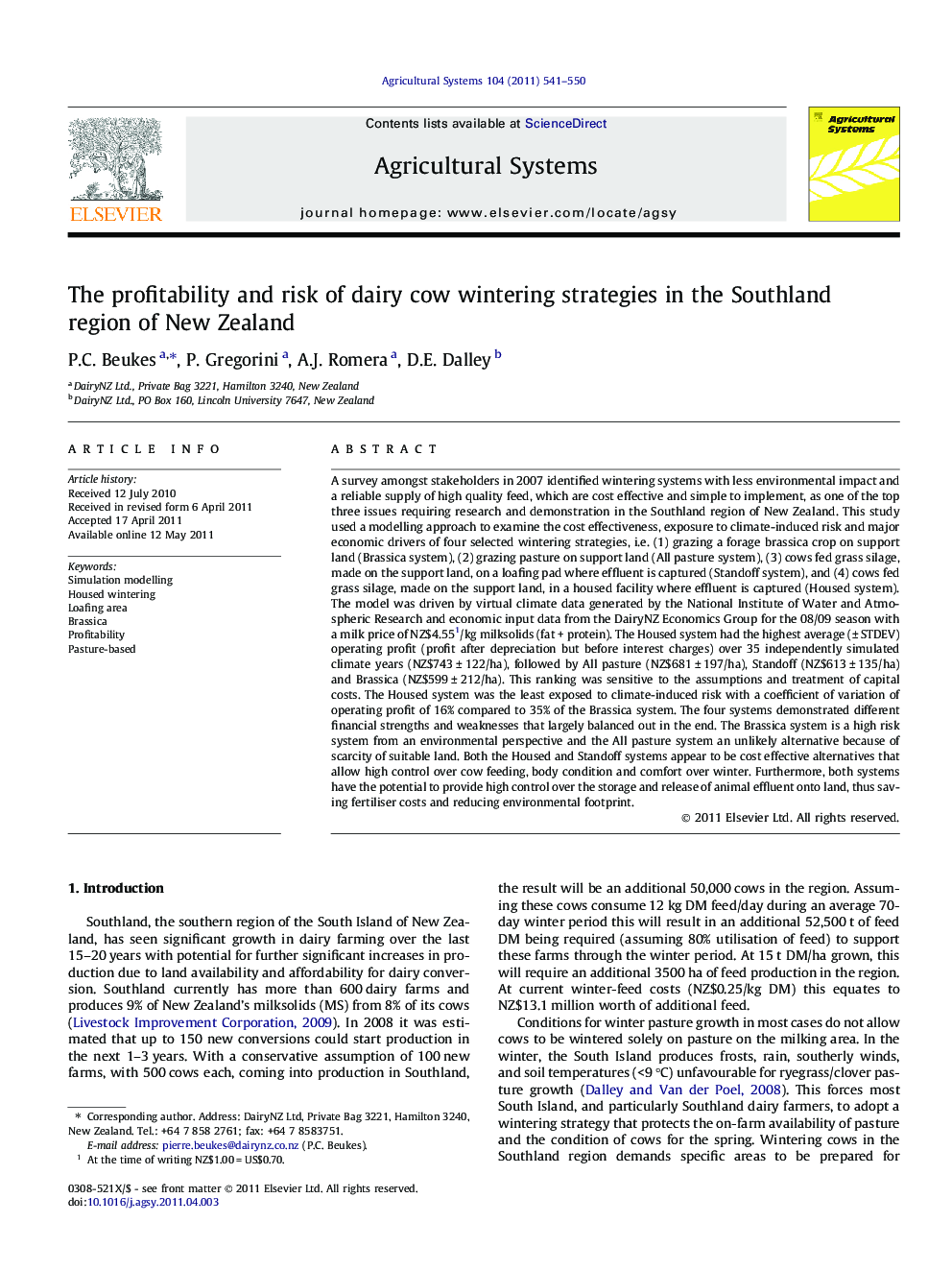| کد مقاله | کد نشریه | سال انتشار | مقاله انگلیسی | نسخه تمام متن |
|---|---|---|---|---|
| 4491484 | 1317856 | 2011 | 10 صفحه PDF | دانلود رایگان |

A survey amongst stakeholders in 2007 identified wintering systems with less environmental impact and a reliable supply of high quality feed, which are cost effective and simple to implement, as one of the top three issues requiring research and demonstration in the Southland region of New Zealand. This study used a modelling approach to examine the cost effectiveness, exposure to climate-induced risk and major economic drivers of four selected wintering strategies, i.e. (1) grazing a forage brassica crop on support land (Brassica system), (2) grazing pasture on support land (All pasture system), (3) cows fed grass silage, made on the support land, on a loafing pad where effluent is captured (Standoff system), and (4) cows fed grass silage, made on the support land, in a housed facility where effluent is captured (Housed system). The model was driven by virtual climate data generated by the National Institute of Water and Atmospheric Research and economic input data from the DairyNZ Economics Group for the 08/09 season with a milk price of NZ$4.551/kg milksolids (fat + protein). The Housed system had the highest average (± STDEV) operating profit (profit after depreciation but before interest charges) over 35 independently simulated climate years (NZ$743 ± 122/ha), followed by All pasture (NZ$681 ± 197/ha), Standoff (NZ$613 ± 135/ha) and Brassica (NZ$599 ± 212/ha). This ranking was sensitive to the assumptions and treatment of capital costs. The Housed system was the least exposed to climate-induced risk with a coefficient of variation of operating profit of 16% compared to 35% of the Brassica system. The four systems demonstrated different financial strengths and weaknesses that largely balanced out in the end. The Brassica system is a high risk system from an environmental perspective and the All pasture system an unlikely alternative because of scarcity of suitable land. Both the Housed and Standoff systems appear to be cost effective alternatives that allow high control over cow feeding, body condition and comfort over winter. Furthermore, both systems have the potential to provide high control over the storage and release of animal effluent onto land, thus saving fertiliser costs and reducing environmental footprint.
► The were only marginal differences in financial performances of the four wintering strategies.
► The ranking of the four strategies was sensitive to how capital costs were included in the analysis.
► The Housed system was least exposed to climate-induced risk.
► Housed and Standoff appeared to be cost effective alternatives to Brassica and All pasture.
► Factors other than financial will be important in the choice of strategy.
Journal: Agricultural Systems - Volume 104, Issue 7, September 2011, Pages 541–550